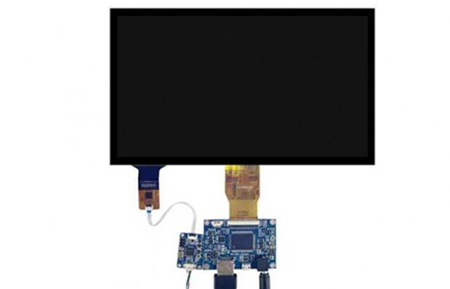What is LCD TV screen structure?
Views: 1511 Update date: Nov 24,2023
Liquid Crystal Display (LCD) TV screens consist of several layers that work together to produce images. The basic structure of an LCD TV screen includes:
Backlight: The backlight is the first layer and is positioned at the rear of the LCD TV screen. It provides the light that passes through the other layers to illuminate the display. There are two main types of backlight technologies: Cold Cathode Fluorescent Lamp (CCFL) and Light Emitting Diode (LED). LED backlights are more commonly used in modern LCD TVs due to their energy efficiency and thinner design.
Polarizing Filters: Two polarizing filters are placed on either side of a layer of liquid crystals. These filters help control the orientation of the light passing through the liquid crystals. The first filter polarizes the light in one direction as it enters the liquid crystal layer.
TFT (Thin Film Transistor) Matrix: Each pixel on the LCD TV screen is associated with a thin film transistor. The TFT matrix acts as a switch, controlling the voltage applied to the liquid crystals in each pixel. This allows precise control over the amount of light that passes through each pixel.
Glass Substrate: The TFT matrix is usually constructed on a glass substrate. The glass provides a stable and rigid surface for the thin film transistor array.
Front Glass or Acrylic Layer: The final layer is the front glass or acrylic layer, which protects the underlying layers and provides a smooth surface for viewing.
The operation of an LCD TV involves applying electrical voltages to the individual pixels, causing the liquid crystals to change their alignment and modulate the passage of light. This modulation, combined with the color filters, creates the pixels that form the images on the LCD TV screen. The use of a backlight ensures that the images are visible, even in low-light conditions.
Backlight: The backlight is the first layer and is positioned at the rear of the LCD TV screen. It provides the light that passes through the other layers to illuminate the display. There are two main types of backlight technologies: Cold Cathode Fluorescent Lamp (CCFL) and Light Emitting Diode (LED). LED backlights are more commonly used in modern LCD TVs due to their energy efficiency and thinner design.
Polarizing Filters: Two polarizing filters are placed on either side of a layer of liquid crystals. These filters help control the orientation of the light passing through the liquid crystals. The first filter polarizes the light in one direction as it enters the liquid crystal layer.
Liquid Crystal Layer: The liquid crystal layer is made up of a substance that changes its molecular alignment when an electric current is applied. This layer is responsible for modulating the passage of light through the LCD TV screen.
TFT (Thin Film Transistor) Matrix: Each pixel on the LCD TV screen is associated with a thin film transistor. The TFT matrix acts as a switch, controlling the voltage applied to the liquid crystals in each pixel. This allows precise control over the amount of light that passes through each pixel.
Glass Substrate: The TFT matrix is usually constructed on a glass substrate. The glass provides a stable and rigid surface for the thin film transistor array.
Front Glass or Acrylic Layer: The final layer is the front glass or acrylic layer, which protects the underlying layers and provides a smooth surface for viewing.
The operation of an LCD TV involves applying electrical voltages to the individual pixels, causing the liquid crystals to change their alignment and modulate the passage of light. This modulation, combined with the color filters, creates the pixels that form the images on the LCD TV screen. The use of a backlight ensures that the images are visible, even in low-light conditions.




